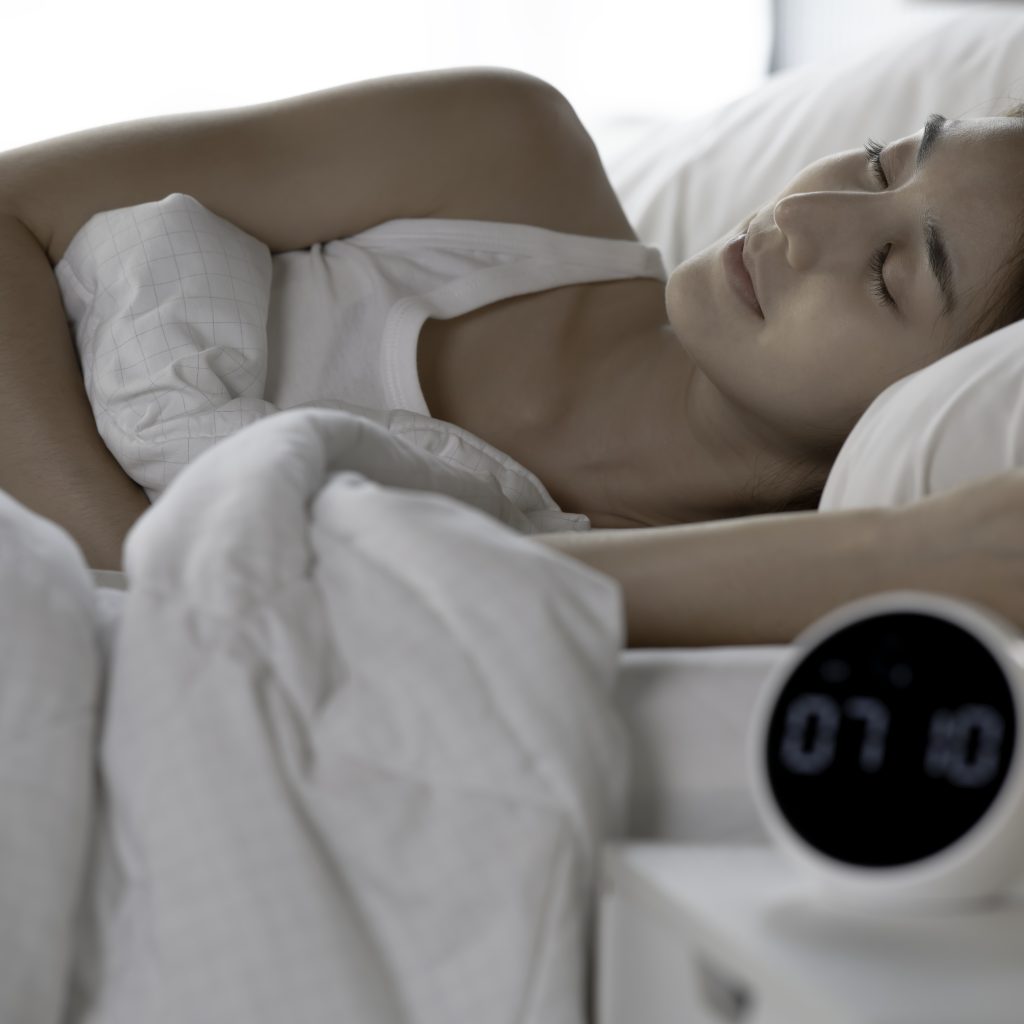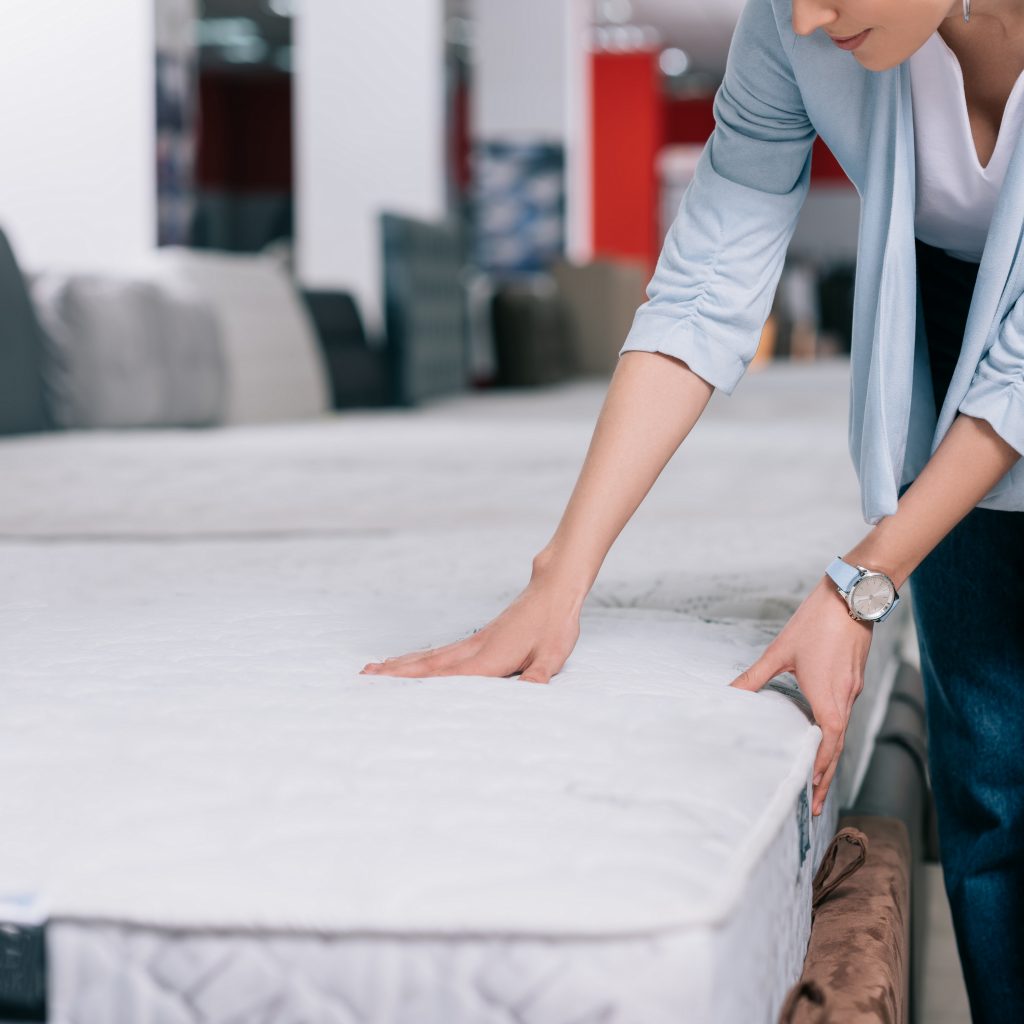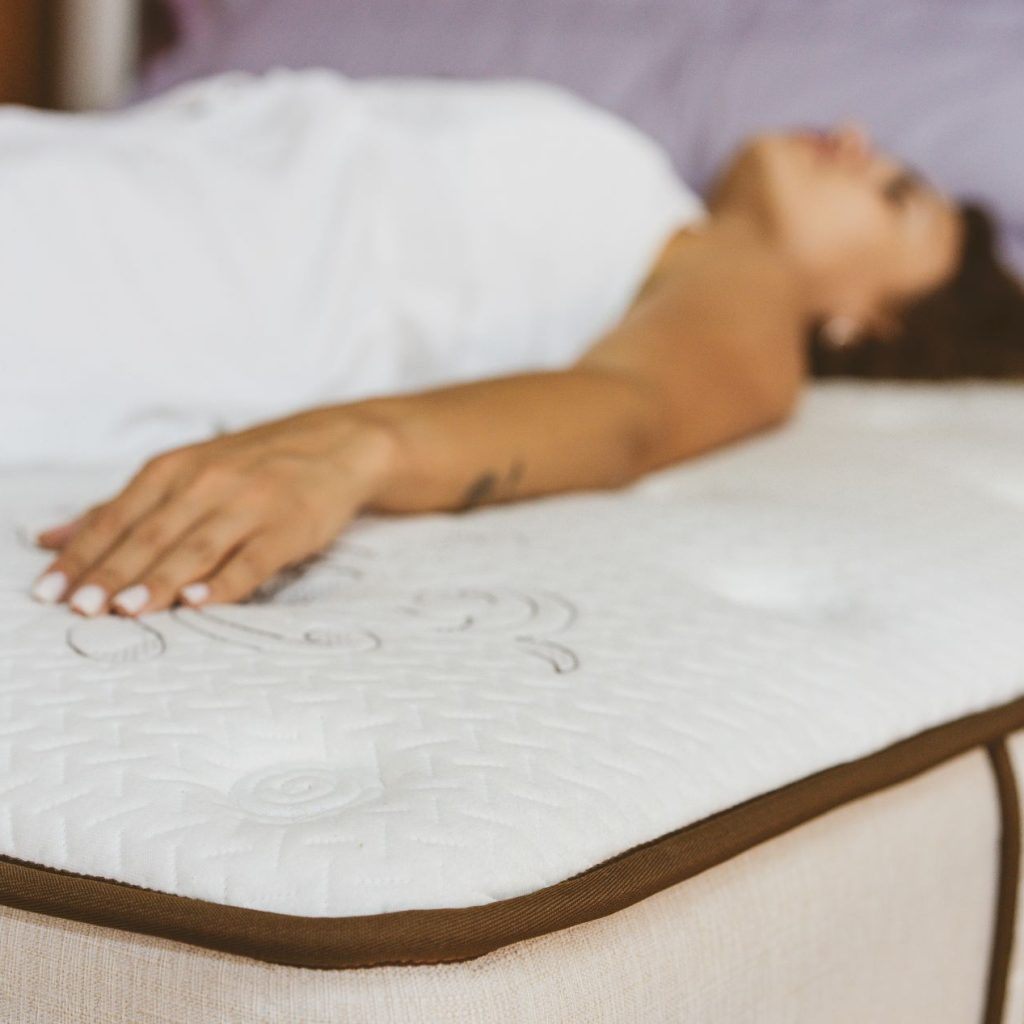The mattress materials you choose can have a huge impact on your quality of sleep, affecting temperature, comfort, support, and circadian rhythms. The experts at Dreamwool Beds are here to talk sleep science and how to choose mattress materials that will help you get the best night’s rest.
The Role of Sleep Science
The truth is that sleep science can be as much (or more) of a hindrance as it is a help. The gadgetization of sleep, by adding lots of technological features and devices, is over complicating our sleeping environment. We often cause ourselves more anxiety and apprehension, leading to poorer sleep outcomes. When choosing mattress materials, all-natural is always best, and when considering sleep hygiene, our best recommendation is to declutter your space, put the trackers away, and just get a great night’s rest.
Breathability
One of the most important factors in sleep comfort is the breathability of your mattress. Chemically made synthetic mattress materials, such as memory foam, don’t allow air to pass through. Some modern bed manufacturers are trying to resolve this problem by adding a top layer of gel to absorb excess heat and maintain a stable temperature. But, however you dress them up, these materials still can’t breathe.
This means that they are actually making mattresses hotter, not cooler, even if they might claim to offer temperature control or feel cool to the touch when you first see them in a shop. Sleep on one for a couple of hours, and you’ll quickly feel those gels warm up and soften, trapping heat, losing support, and leaving you with an inferior quality of sleep.
Your Sleep Cycle
Our natural circadian rhythms are intended to help our bodies relax and get restful sleep. If you are sleeping on a hot mattress made with synthetic materials that aren’t breathable, you’re more likely to feel anxious as you struggle to achieve and maintain a good quality of rest. Your heart rate will increase as your body temperature rises, resulting in a disrupted sleep cycle.
Conversely, the breathability of natural mattress materials, such as those used by Dreamwool, helps to control your bed’s microclimate and achieve temperature neutrality. This allows you to better weather external temperature changes or hormonal fluctuations and achieve an undisturbed sleep cycle. By stabilising the temperature of your sleep environment with all-natural materials like Merino wool, your body doesn’t have to adjust to changing temperatures through the night. Your heart rate can remain consistent, allowing you to achieve a deeper, more restful sleep with fewer disruptions.
Natural is Best for Temperature, Comfort and Health
When it comes to sleep science, if a mattress has lots of add-on features, you should be asking why they’re needed. In many cases, the cooling mechanisms you see in high-tech mattresses are addressing problems created by flaws in the original mattress design. While you may be able to briefly cool down an inferior mattress, if air can’t move freely through it – which is impossible in a closed-cell synthetic foam – you’ll never really be able to keep cool. This is because synthetic foams and gels don’t maintain their support overnight, eventually trapping air flow and preventing breathability. As the night wears on, you’re likely to feel the bed get hotter and more uncomfortable.
Don’t be taken in by buzzwords or new technologies that tick boxes but don’t deliver on their promises. Great sleep is simple. And the healthiest, most comfortable mattress will always be one that is made with high-quality, all-natural materials in meaningful volumes.
There is nothing better or more luxurious than a mattress made with the simple goodness of natural Merino wool.
Book a consultation at Dreamwool today to experience one for yourself.





